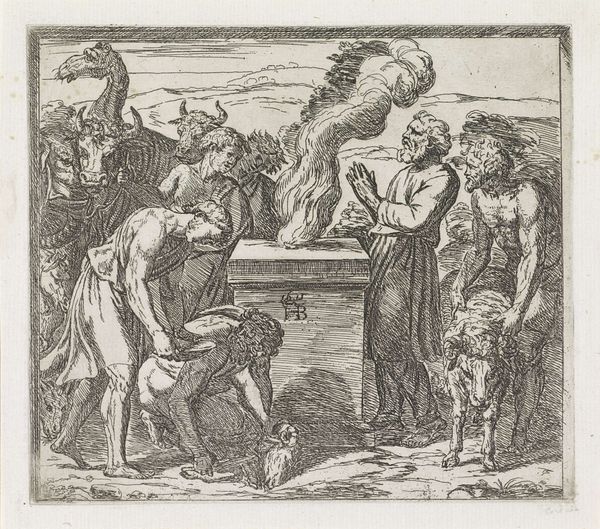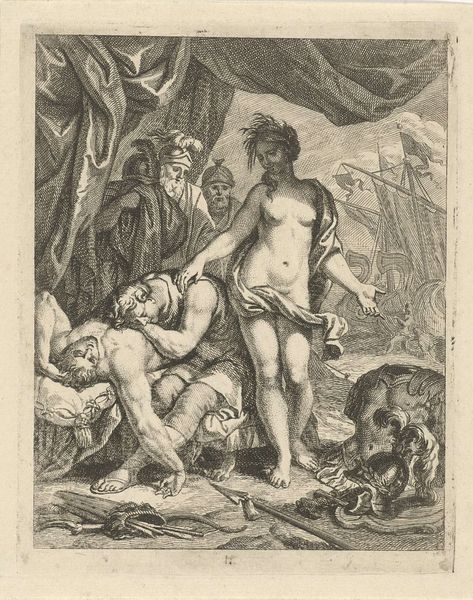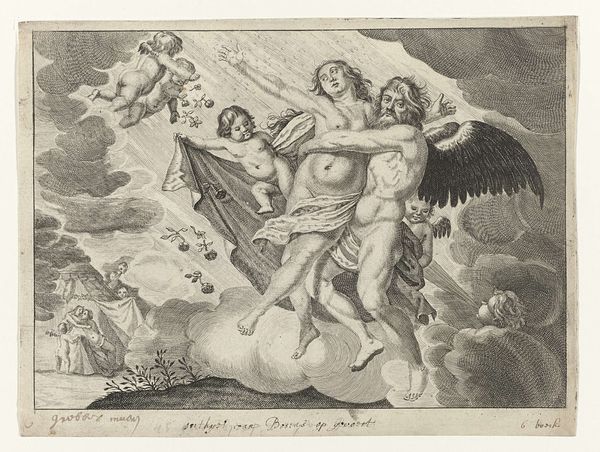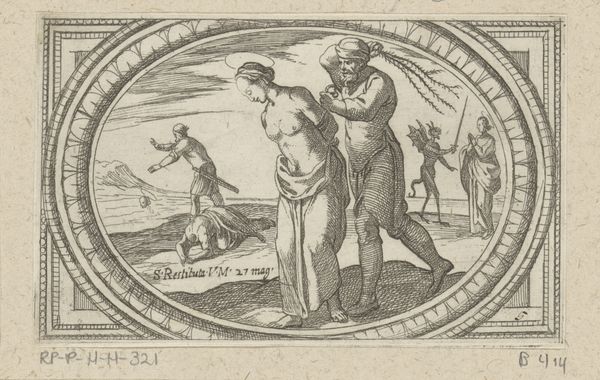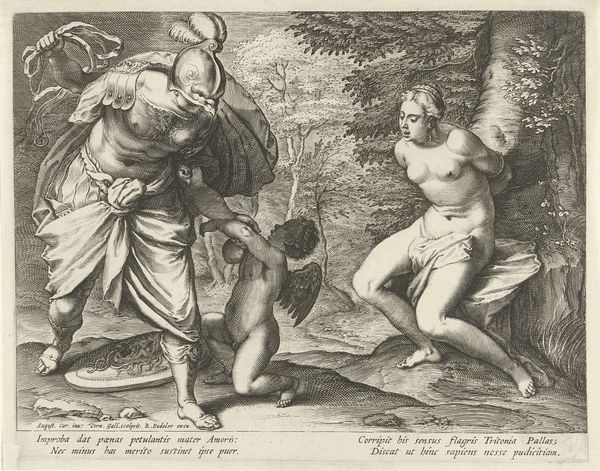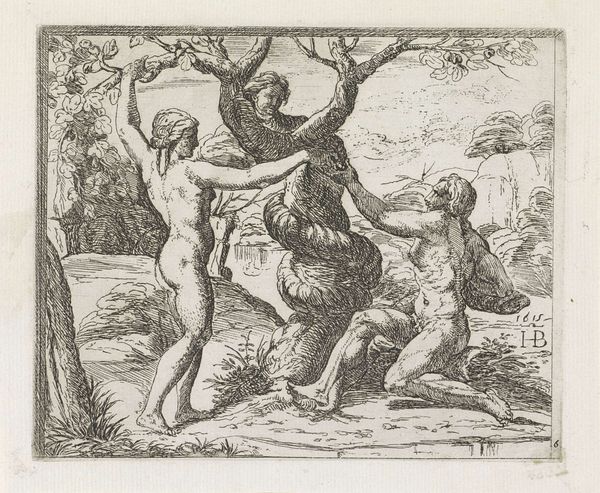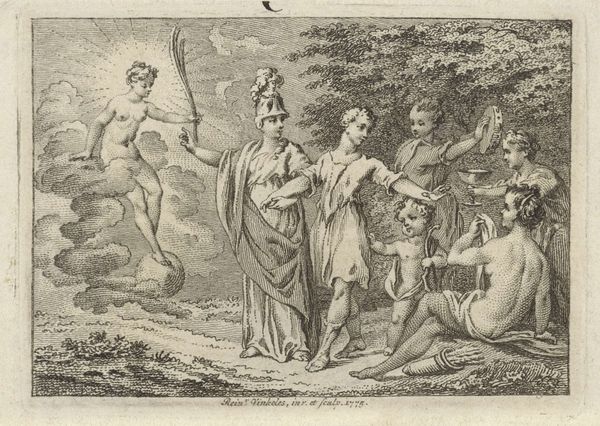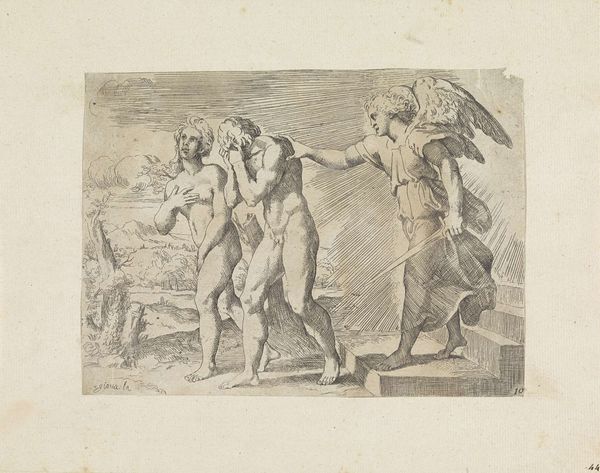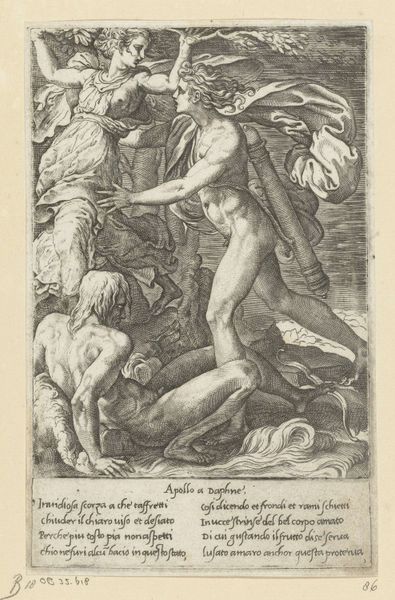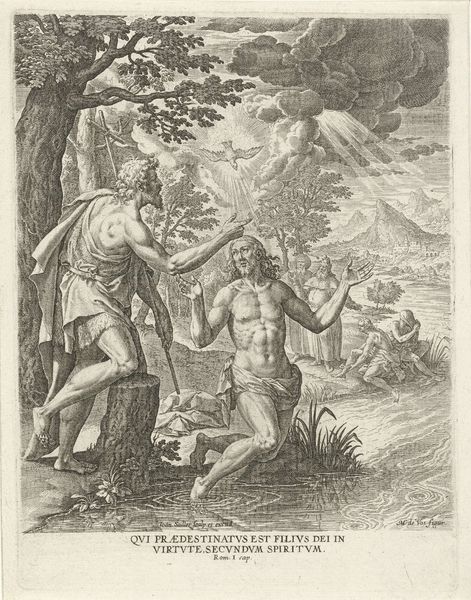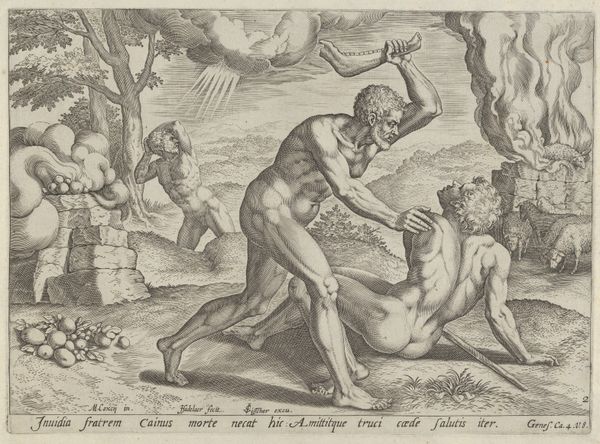
print, engraving
#
allegory
#
baroque
# print
#
figuration
#
history-painting
#
engraving
Dimensions: height 140 mm, width 170 mm
Copyright: Rijks Museum: Open Domain
Curator: This is "Expulsion from Paradise," an engraving crafted between 1588 and 1616 and currently housed in the Rijksmuseum. Orazio Borgianni, a figure deeply involved in the artistic currents of the late 16th and early 17th centuries, created it. Editor: It immediately strikes me as bleak. That harsh light against the figures, the visible distress in Adam’s posture—it conveys a real sense of loss and divine punishment. The symbolism, the bodies, the light and shade; they're emotionally compelling. Curator: Borgianni engaged significantly with allegorical subjects. Given its context in the late 16th century, you can read the expulsion narrative as reflecting on the moral and religious tensions that the Church had undergone, particularly its public image amidst scandals of wealth and authority. Engravings allowed such themes broader dissemination. Editor: The angel feels less vengeful and more sorrowful, doesn’t it? Notice the angel is physically guiding Adam and Eve, but there is no solace there, just dutiful adherence to the divine command. Is this representative of law superseding mercy in the societal conscious during this period? Curator: In terms of social understanding, it illustrates the complexities of faith and human agency. The Baroque style amplified the emotion and drama to reach the widest possible audience for ideological teachings that aligned with that of the Catholic Church during its counter-reformation efforts. Editor: Interesting to see the shift away from idyllic representations. Previous depictions of paradise often portray serene landscapes, almost as if a world apart. Here the background landscape mimics more that of ordinary human geography as opposed to something entirely apart from worldly suffering, bringing them ever closer. This choice suggests the intended message might be a universal call back towards purity. Curator: Yes, in moving the characters, physically from the steps out toward a field, it seems Borgianni captures that broader dissemination we touched on before, a symbolic spread of that burden and responsibility on viewers. The Baroque appeal to the emotional core of experience is designed precisely to have that affect. Editor: It gives you pause, doesn't it? This work resonates not only with the biblical narrative but with the perpetual human drama of choices, consequences, and a sense of profound loss. Curator: It illustrates how effectively engravings function within the theater of morality.
Comments
No comments
Be the first to comment and join the conversation on the ultimate creative platform.

